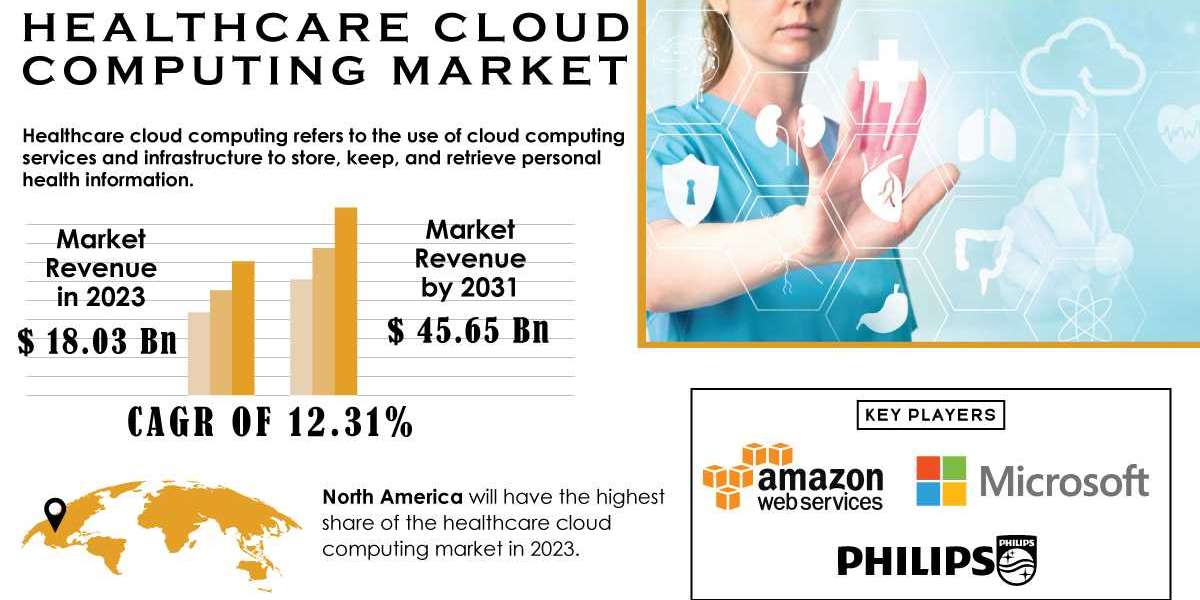Healthcare Cloud Computing 2024
The healthcare industry is experiencing a significant transformation, driven by technological advancements that enhance patient care, operational efficiency, and data management. Among these innovations, healthcare cloud computing stands out as a game-changer, providing solutions that facilitate better collaboration, data sharing, and accessibility of health information. The Healthcare Cloud Computing Market Growth underscores this trend, with a valuation of USD 48.88 billion in 2023 and expectations to reach USD 199.21 billion by 2032, reflecting a robust compound annual growth rate (CAGR) of 16.90% over the forecast period from 2024 to 2032.
The Role of Cloud Computing in Healthcare
Cloud computing in healthcare refers to the delivery of various services over the internet, including storage, processing, and data management. This technology enables healthcare providers to store large volumes of patient data securely and access it from anywhere at any time. By leveraging cloud-based solutions, healthcare organizations can efficiently manage electronic health records (EHRs), patient management systems, and clinical data analytics.
One of the critical advantages of cloud computing in healthcare is its ability to streamline operations. Healthcare providers can reduce costs associated with maintaining on-premises infrastructure while ensuring that they have access to the latest technologies and software. Additionally, cloud computing fosters collaboration among healthcare teams, allowing multiple users to access and share patient information in real time, ultimately leading to improved patient outcomes.
Enhanced Data Security and Compliance
Data security is a significant concern in the healthcare industry, given the sensitive nature of patient information. Cloud computing providers typically invest in robust security measures to protect data from breaches and unauthorized access. Features such as encryption, access controls, and continuous monitoring are standard in cloud solutions, ensuring that patient data remains secure.
Moreover, healthcare organizations must comply with stringent regulations like the Health Insurance Portability and Accountability Act (HIPAA) in the United States. Cloud computing providers often offer compliance support, helping healthcare organizations adhere to these regulations while benefiting from the flexibility and scalability of cloud solutions. By utilizing cloud-based services, healthcare entities can enhance their data security posture while maintaining regulatory compliance.
Improving Patient Engagement and Care Delivery
Healthcare cloud computing significantly enhances patient engagement and care delivery. Cloud-based applications enable healthcare providers to offer telemedicine services, allowing patients to consult with physicians remotely. This convenience increases access to care, particularly for those in rural or underserved areas. Additionally, cloud solutions can support patient portals, where individuals can access their health records, schedule appointments, and communicate with healthcare providers, fostering a more proactive approach to health management.
Furthermore, cloud computing facilitates data analytics, empowering healthcare organizations to derive valuable insights from patient data. By analyzing trends and patterns in health information, providers can identify at-risk patients, enhance treatment plans, and improve overall healthcare delivery. This data-driven approach not only enhances patient care but also contributes to better health outcomes.
Cost Efficiency and Scalability
Cost efficiency is another driving factor behind the adoption of cloud computing in healthcare. Traditional IT infrastructures require substantial investments in hardware, software, and maintenance. In contrast, cloud computing operates on a subscription model, allowing healthcare organizations to pay for only the resources they use. This flexibility is particularly beneficial for smaller healthcare providers that may have limited budgets.
Additionally, cloud solutions offer scalability, enabling healthcare organizations to adjust their resources based on demand. During peak times, such as flu season, providers can quickly scale up their cloud resources to accommodate increased patient volume. Conversely, they can scale down during slower periods, optimizing operational costs.
Future Trends in Healthcare Cloud Computing
As technology continues to evolve, the future of healthcare cloud computing looks promising. The integration of artificial intelligence (AI) and machine learning (ML) into cloud-based solutions will likely enhance data analytics capabilities, enabling more personalized care and predictive insights. Furthermore, the rise of the Internet of Things (IoT) in healthcare will create a vast network of connected devices, generating enormous amounts of data that cloud computing can efficiently manage and analyze.
Another trend is the increasing focus on interoperability among healthcare systems. Cloud computing solutions can facilitate seamless data exchange between various healthcare applications, enhancing care coordination and collaboration among providers.
Conclusion
Healthcare cloud computing is reshaping the healthcare landscape by improving data management, enhancing patient care, and optimizing operational efficiency. With a significant growth trajectory in the Healthcare Cloud Computing Market, healthcare organizations are increasingly recognizing the benefits of adopting cloud-based solutions. As technology continues to advance, cloud computing will play a pivotal role in driving innovation and improving healthcare delivery, ultimately leading to better patient outcomes and a more efficient healthcare system.
Contact Us:
Akash Anand – Head of Business Development Strategy
info@snsinsider.com
Phone: +1-415-230-0044 (US) | +91-7798602273 (IND)
About Us
SS Insider is one of the leading market research and consulting agencies that dominates the market research industry globally. Our company's aim is to give clients the knowledge they require in order to function in changing circumstances. In order to give you current, accurate market data, consumer insights, and opinions so that you can make decisions with confidence, we employ a variety of techniques, including surveys, video talks, and focus groups around the world.
Read Our Other Reports:
Enterprise Video Market Growth














